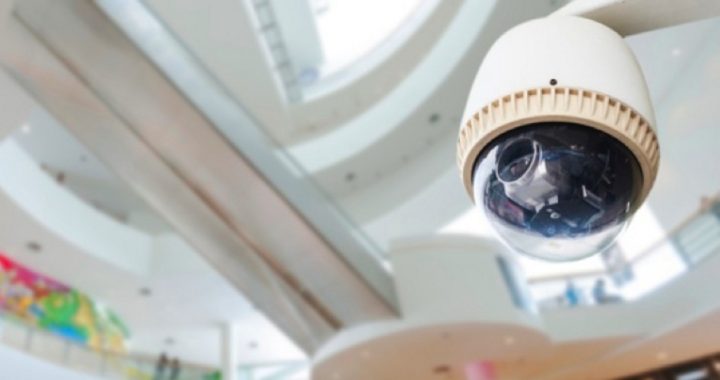
In the almost two and a half years since former NSA contractor Ed Snowden revealed the ubiquitous surveillance under which the world lives, much of the focus has been on what government agencies are doing. The problem, though, runs deeper. The surveillance state exists within a culture of surveillance created by the incestuous relationship between overreaching government agencies and nosy corporations.
There is no liberty without privacy. As the culture of surveillance grows, liberty recedes. The New American has reported on many of the threats to privacy that are becoming more and more commonplace. Some Smart TVs are spying on users via their integrated cameras, microphones, and Internet connectivity and then reporting back to the manufacturers, who sell that data to advertisers. Other “Internet of Things” devices have surveillance capabilities that are marketed as features promising convenience to users. Facebook performs social/psychological experiments on its users and also harvests users’ data to sell to advertisers.
To make matters worse, Microsoft has turned its operating system, Windows, into a suite of softwares designed to spy on users, report back to Microsoft on their use, and remotely remove software from their computers, all while hiding these activities from all but the most tech-savvy users.
With the proliferation of surveillance as a “convenience feature” or as a prerequisite to using otherwise useful tools, is it any wonder that a Pew study last year found that privacy is eroding, with many accepting that erosion as normal? And with greater acceptance comes greater erosion. As The New American noted after the study was released:
Moving forward, many young Internet users who today are more than willing to trade their birthright of privacy and liberty for a mess of potage (or a cup of coffee) are going to become the example that the next generation imitates. What one generation accepts, the next expects.
Last year the most cited legal scholar of the 20th century, Judge Richard Posner, said the NSA should have free range to “vacuum all the trillions of bits of information that are crawling through the electronic worldwide networks.” He went on to say that the only reason anyone would object, is that they are “just trying to conceal the disreputable parts of [their] conduct.” The surveillance culture has alreday become so pervasive that his remarks — which should have caused outrage — were largely unreported. When they were reported, they were used largely as justification for the mass surveillance that is destroying privacy and liberty.
And it’s not just the use of computer technology that puts privacy at risk. Retailers regularly use their “rewards” cards to collect information on their customers’ purchases, again for advertising purposes. While many see the value in targeted advertising, the following story this writer shared in a previous article illustrates how such convenience masks a very real threat to privacy:
Data mining is a big problem, as we saw from the documents leaked by Snowden. But there is more to it than most people realize. In 2012, a father of a teenage girl saw for himself how powerful this form of information gathering and analysis can be. Several years ago, Target department stores started offering Redcard. It’s a credit or debit card that can be used to make purchases at Target stores and on their website. It offers a five-percent discount any time it is used. Target’s reason for doing this is simple. It ties all of your purchases together into one profile for data-analysis purposes so that they can send you advertising based on not just what you buy, but what their data analysis tells them you are going to buy. How effective is it? The father of that teenager stormed into a store outside Minneapolis and demanded to know why his daughter was receiving advertisements for baby clothes, baby furniture, and diapers. After all, she is still in high school. The manager said he would look into it and call the father in a day or so. When he called two days later, the father said that he had talked with his daughter and learned that she was, indeed, pregnant. Target figured it out before her own father did.
While that particular event involved Target, other retailers use their “rewards” cards in much the same way — with varying degrees of success and accuracy.
Companies, including major retailers, use a variety surveillance methods to keep an eye on both customers and employees. While some of this surveillance may have some justification — such as preventing robbery and shoplifting — it is still part of the surveillance culture that threatens privacy and liberty. Much of the surveillance practiced by companies has little, if any, justification.
Walmart is the world’s largest company with more than 11,500 stores operating in 28 countries. With more than 2.2 million employees, it is also the world’s largest employer. Because of understandable concerns about employees unionizing, the retail giant has conducted campaigns of surveillance on a level that many nations would have difficulty rivaling.
When Walmart senior management heard about plans for an employee strike on Black Friday 2012, they formed a Delta Team to begin spying and reporting on employees to determine who was a threat and how best to react. The organization behind the plans for a strike was OUR Walmart (the Organization United for Respect at Walmart), which was the offspring of the United Food and Commercial Workers International (UFCW) union. While Walmart publicly pretended not to be concerned, Bloomberg reported:
Walmart considered the group enough of a threat that it hired an intelligence-gathering service from Lockheed Martin, contacted the FBI, staffed up its labor hotline, ranked stores by labor activity, and kept eyes on employees (and activists) prominent in the group. During that time, about 100 workers were actively involved in recruiting for OUR Walmart, but employees (or associates, as they’re called at Walmart) across the company were watched; the briefest conversations were reported to the “home office,” as Walmart calls its headquarters in Bentonville, Ark.
Besides being one of the largest defense contractors in the world, Lockheed Martin “also has an information technology division that offers cybersecurity and data analytics services,” according to the report by Bloomberg:
Lockheed Martin is one of the biggest defense contractors in the world. Although it’s best known for making fighter jets and missile systems, it also has an information technology division that offers cybersecurity and data analytics services. Tucked into that is a little-known operation called LM Wisdom, which has been around since 2011. LM Wisdom is described on Lockheed’s website as a tool “that monitors and analyzes rapidly changing open source intelligence data … [that] has the power to incite organized movements, riots and sway political outcomes.” A brochure depicts yellow tape with “crime scene” on it, an armored SWAT truck, and a word cloud with “MAFIA” in huge type.
Karen Casey was the labor relations executive at Walmart as the plans for OUR Walmart’s Black Friday strike began to come to light. In January 2015, she testified in the National Labor Relations Board (NLRB) hearings that resulted from complaints that Walmart retaliated against employees that participated in protests which took place in June 2013. In her testimony, she told how the Analytical Research Center, which is part of Walmart’s global security division, entered into a contract with Lockheed Martin to “source” the “open social media sites” used by the protesters. Again, from Bloomberg:
The Analytical Research Center, or ARC, is part of Walmart’s global security division. Ken Senser, a former FBI officer, oversees the entire group. The executive responsible for ARC was Steve Dozier, according to Casey’s testimony. He was director of the Arkansas State Police before he joined Walmart in 2007. “When we received word of potential strikes and disruptive activity on Black Friday 2012, that’s when we started to ask the ARC to work with us,” Casey said during her testimony. “ARC had contracted with Lockheed leading up to Black Friday to help source open social media sites.”
“Sourcing” refers to gathering data from those sites. In other words, Lockheed Martin was hired — at least in part — to conduct surveillance on the social media pages of the protesters.
So, the world’s largest company employs a former FBI agent and a former director of the Arkansas State Police, has contracted with one of the largest defense contractors in the world, and contacted the FBI all to conduct surveillance on its own employees. While this writer is certainly no union apologist and can understand a company not wanting its employees to unionize, surely there is a place somewhere on the other side of Walmart’s actions where the line should have been drawn.
As the surveillance culture — and by extension, the surveillance state — has grown, government agencies and corporations have reaped the benefits while ordinary citizens have paid the price. Freedom-loving Americans should stop participating in the culture of surveillance and instead actively resist it. The solution is two-fold. Those concerned about privacy should elect men and women who value privacy as much as they do and put pressure on Congress to dismantle both the apparatus and the agencies that have conducted government-sanctioned surveillance on ordinary citizens. They should also develop a mindset of protecting themselves against surveillance. Fortunately, there are many tools available for anyone who is willing to learn to use them.




